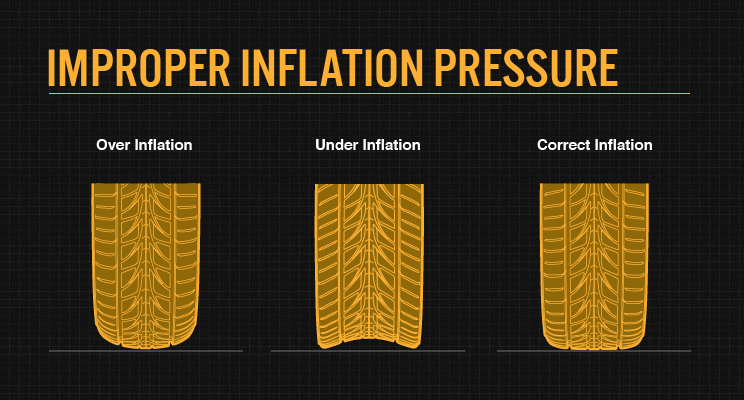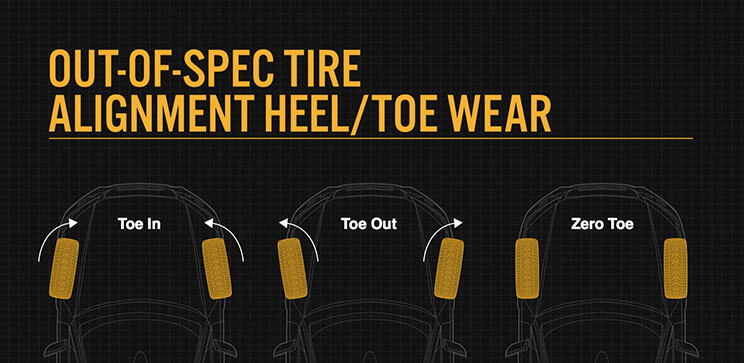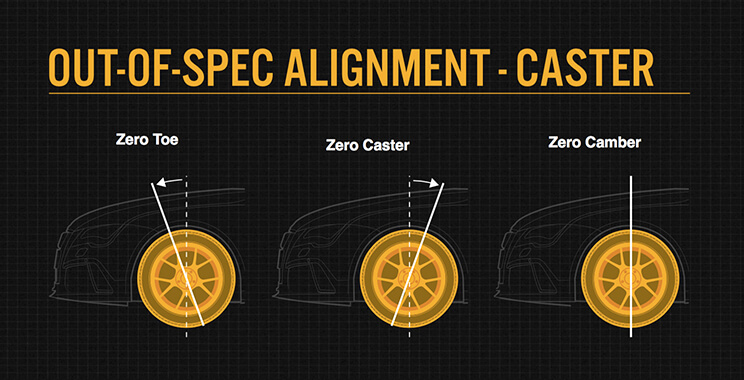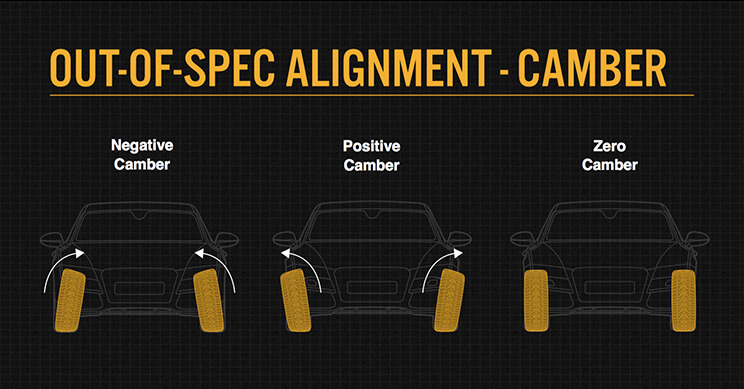Tyre Tread Wear & Causes
As tyres are used, it is normal for the tread to gradually become shallower and overall tyre performance to change. In addition, irregular tread wear may occur for a variety of reasons that may lead you to have to replace a tyre sooner rather than later. Regularly checking the tread depth and wear condition of each tyre on your vehicle will not only let you know when it is time to replace a tyre, it can also help you detect other needed maintenance and get the most value out of your vehicle and tyres.
Why Tyre Wear Matters
Too little tyre tread can create unsafe driving conditions. When tyres can’t grip the road, a driver may lose control of his or her vehicle. When roads are wet, tyre tread depth is very important. Anytime precipitation gets between your tyres and the road, you need the tread to cut through it and maintain as much contact with the road surface as possible. The shallower your tread is, the easier it is to lose traction when driving in the wet; reducing speed in those conditions helps you maintain grip.
What is the Minimum Tyre Tread Depth?
Most countries have established a 1.6mm minimum tread depth requirement, which require drivers to replace a tyre when the tyre wears down to that depth. Regardless of which state you live in, Bridgestone recommends that a tyre be replaced when any portion of the tread is at 1.6mm depth.
How do you know if you’ve reached the 1.6 mm threshold? Use the tyre tread depth indicators found within the tread grooves. Every passenger, light truck, and medium truck tyre has these indicators, also known as wear bars, at various places around the tyre. Tread depth indicators are there so you can visually determine whether you have reached 1.6 mm in that groove without having to measure the depth with a tool. Replace any tyre where the tread ribs become flush with the indicator bars.
What Causes Early Wear Out or Irregular Tyre Wear?
Just as vehicles, drivers, and driving habits are different from each other, not all tyres are the same and they can wear at very different rates. For instance, high performance tyres for sports cars wear more quickly than touring tyres for a family sedan. However, a variety of factors can cause a tyre to wear out sooner than expected, and/or cause it to wear irregularly and create noise or vibration. Two common causes of early tyre wear out and irregular tyre wear are improper inflation pressure and out-of-spec wheel alignment conditions.
Tyre Tread Wear Cause 1: Improper Inflation Pressure
When a tyre is improperly inflated, there’s a good chance it will start to wear more rapidly and/or unevenly. Not only do vehicle manufacturers specify the inflation pressures for the front and rear tyres to optimise performance for ride comfort, handling and fuel economy, they also take into consideration tyre wear. Proper inflation pressure helps optimise distribution of vehicle load, acceleration, braking, and cornering forces in the tread. If the tyre pressure is too low, or even too high, the contact patch of the tyre tread is not optimised to handle the wide variety of jobs it is asked to do. Thus, different parts of the tread may be abraded away more quickly and/or irregularly.

Check the pressure in all of your tyres, including the spare, every month. Also check it before going on a long trip or when you plan to carry extra load. You can find the vehicle manufacturer’s tyre pressure specifications on a placard/label affixed to the driver’s door or along the door jam. You can also check your vehicle owner’s manual for tyre pressure recommendations.
Tyre Tread Wear Cause 2: Out-of-Spec Tire Alignment
Tyre alignment, also known as wheel alignment, refers to the adjustment of the vehicle’s steering and suspension components – the system that connects and controls the motion of the wheels. It is not an adjustment of the tyres or wheels itself. The key to proper alignment is to adjust the angles of the tyres and their contact with the road in accordance with the vehicle manufacturer’s specifications for parameters such as camber, toe, and caster.
Improper tyre alignment can cause your tyres to wear unevenly and prematurely. Common irregular tyre tread wear conditions from improper alignment include the following:
- Heel/Toe Tyre Wear: This happens when one side of the tread blocks is wearing faster than the other side circumferentially. When you run your hand over the tread blocks, they will feel like saw teeth. Heel/toe wear typically occurs in a shoulder rib and is often caused by excessive positive or negative toe.

- Feather Edge Tyre Wear: Tyres are “feathered” when the tread ribs are worn lower/smoother on one side and higher/sharper on the other. This is often caused by a combination of improper alignment settings, such as excessive toe and caster.

- One-Sided Shoulder Tyre Wear: This type of irregular tread wear means the inside or outside shoulder rib of the tread is significantly more worn than the other ribs. Also known as camber wear, excessive positive or negative camber often causes this type of wear.

It is imperative to keep your tyres properly maintenanced by checking your tyre pressure monthly. If you’re experiencing any unusual wear patterns, you should have a technician to check your alignment.
-
Run-Flat Technology Tyres: How They Work
Run-Flat Technology Tyres: How They Work
Though they first appeared in the mid-1980s, Run-Flat Technology tyres are now more popular and technologically advanced than ever before. Take a look at the technology behind these game-changing tyres.
Click to Learn More -
5 Tips for Tyre Maintenance Before a Road Trip
5 Tips for Tyre Maintenance Before a Road Trip
Your car's tyres are a vital part of any journey, and making sure they're in top shape before you hit the road is even more important than making sure the right playlist is ready to blast out of the car's speakers.
Click to Learn More -
It's Time for a Change: Run-Flat Technology
It's Time for a Change: Run-Flat Technology
At Bridgestone, we've always been in the fast lane when it comes to innovation. Today, we're still leading the pack, with the introduction of Run-Flat Technology, the first full line of run-flat tyres - tyres that keep you moving, even after a puncture.
Click to Learn More